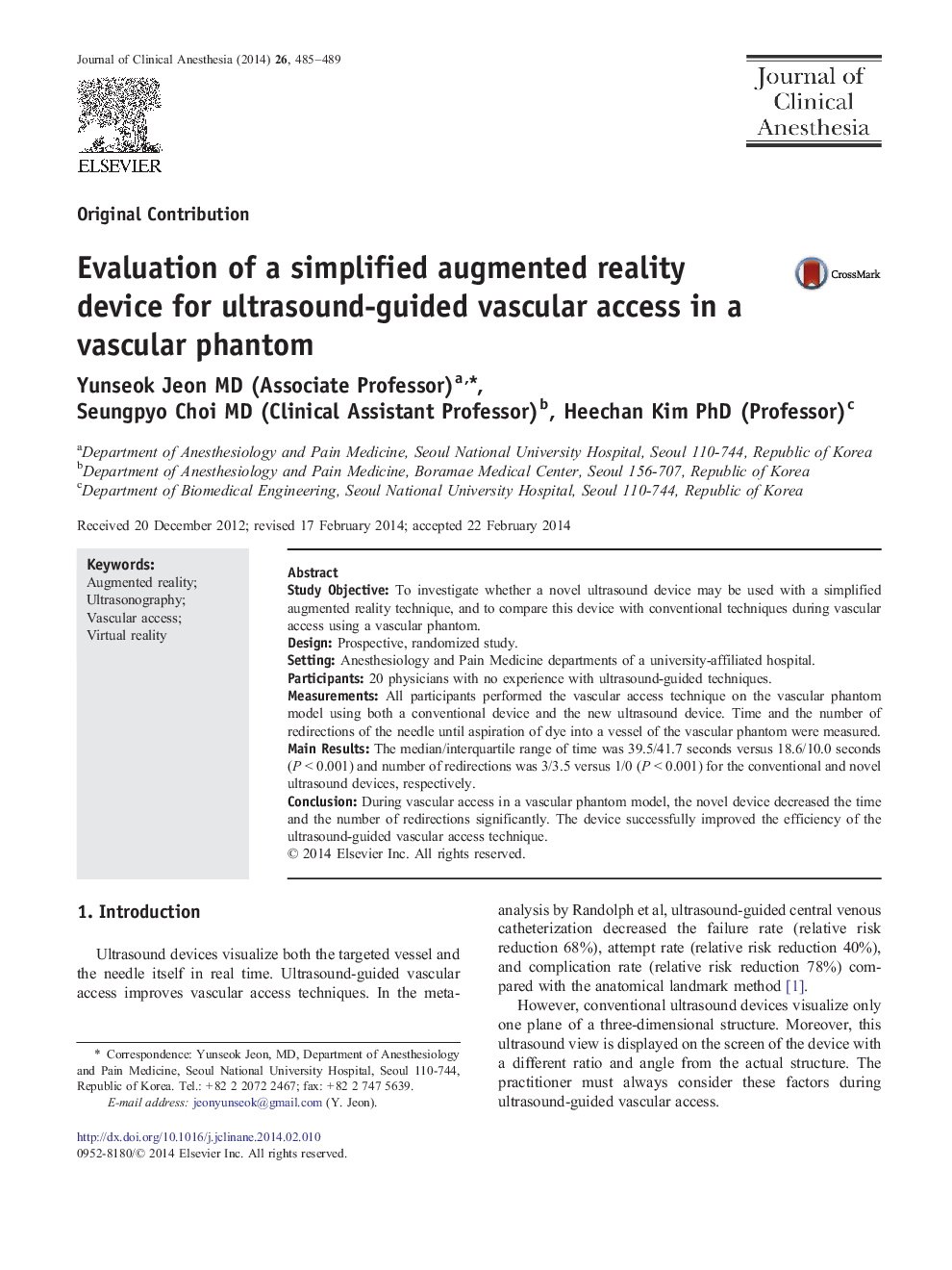| Article ID | Journal | Published Year | Pages | File Type |
|---|---|---|---|---|
| 2762304 | Journal of Clinical Anesthesia | 2014 | 5 Pages |
Study ObjectiveTo investigate whether a novel ultrasound device may be used with a simplified augmented reality technique, and to compare this device with conventional techniques during vascular access using a vascular phantom.DesignProspective, randomized study.SettingAnesthesiology and Pain Medicine departments of a university-affiliated hospital.Participants20 physicians with no experience with ultrasound-guided techniques.MeasurementsAll participants performed the vascular access technique on the vascular phantom model using both a conventional device and the new ultrasound device. Time and the number of redirections of the needle until aspiration of dye into a vessel of the vascular phantom were measured.Main ResultsThe median/interquartile range of time was 39.5/41.7 seconds versus 18.6/10.0 seconds (P < 0.001) and number of redirections was 3/3.5 versus 1/0 (P < 0.001) for the conventional and novel ultrasound devices, respectively.ConclusionDuring vascular access in a vascular phantom model, the novel device decreased the time and the number of redirections significantly. The device successfully improved the efficiency of the ultrasound-guided vascular access technique.
